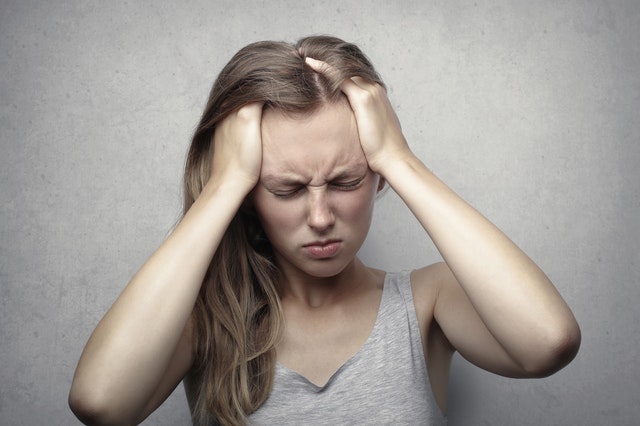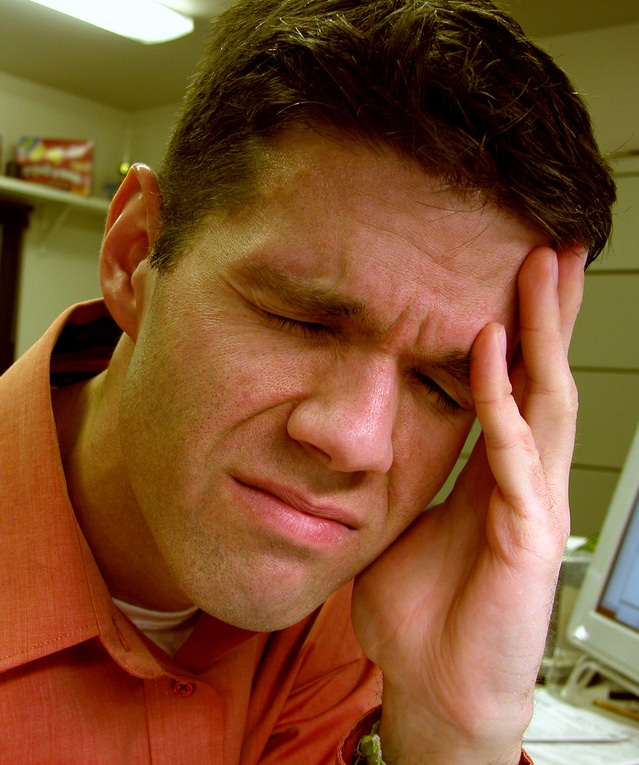Dealing with the Pain of a Tension Headache Back of Head
Headaches can range from irritating to disruptive in terms of seriousness. They can appear in any area of the head. Headaches that include pain in the back of the head can have many diverse causes, which can usually be identified depending on your other symptoms.
These symptoms include the type of pain felt and other areas where the pain may be present. One of the leading causes of pain in the back of the head is tension headaches.
A tension headache is generally a diffuse pain in your head that can be described as “constricting” or “tightening.” Tension headaches are very common, but they still are not well-understood.
Treatments for tension headaches are available. Managing a tension headache is about building healthy habits, using medications appropriately, and finding non-drug treatments that give you relief.
This review will look at the types of tension headaches, causes of the pain, and how to handle the headaches when they manifest.
Types of Tension Headaches

Tension Headache Back of Head: Most Common Types
Episode Tension Headaches
Episode tension headaches can last for a period of 30 minutes to a week. Frequent episodic tension pains arise less than 15 days a month and may become chronic.
Chronic Tension Headaches
This type of tension headache continues for hours and may be incessant. If your headaches occur 15 or more days a month for at least three months, they’re considered chronic.
Other Causes of Tension-Pain in The Back of The Head
Arthritis
Arthritis can be brought about by inflammation and swelling in the neck area. This condition often causes pain in the back of the neck and head. Movement triggers more intense pain. Any kind of arthritis can cause these pains. The most common are osteoarthritis and rheumatoid arthritis.
Herniated Disks
Herniated disks in the cervical spinal column (neck) can cause neck aches and tension. This can cause a kind of headache called a cervicogenic headache. The pain manifests mostly in the back of the head. It may also be experienced behind the eyes. Other symptoms may include distress in the shoulders or upper arms.
Cervicogenic pain may increase when lying down. Some individuals will wake up because the pain interrupts their sleep. When lying down, you may feel pressure on the top of your head like a weight.
Poor Posture
Poor posture can also result in pain in the back of your head and neck. Poor body placement creates tension in your back, neck, and shoulders. And that tension can result in a headache. You may experience a dull, throbbing discomfort at the base of your skull.
Occipital Neuralgia
Occipital neuralgia is a disorder that occurs when the nerve endings that run from the spinal cord to the scalp are dented. It is often confused with migraines. Occipital neuralgia causes a sharp but throbbing discomfort at the base of your skull, in the neck, and passes towards the scalp.
Some other symptoms include a sharp stabbing sensation that feels like an electric shock at the base of the head, sensitivity to light, pain when moving your neck, tender scalp, and plenty more besides.
How to Handle Pain in The Back of The Head

Tension Headache Back of Head Can Be Relieved
Relaxation Procedures
Relaxation techniques can help relieve tension headaches, as long as you regularly practice and use these techniques. Physical tactics include applying a heating cloth to your neck and shoulders to calm the muscles.
Exercising your neck and shoulder muscles helps them become more potent and stretchable. Guided imagery exercises that help you concentrate on various parts of your body to calm them and release tension and stress can also help.
Medical Approach
Some people with tension pains have very sensitive zones, known as trigger points, at the back of the neckline or in the shoulders. Injecting an anesthetic into these areas may remove the pain and prevent the headache from happening again.
There are also a couple of drugs that can help keep tension pains at bay. If non-drug treatments aren’t giving you the relief you need, consult a doctor about the medication options that are accessible and right for you.
Biofeedback
This technique requires special training but can help people avoid recurrent pains in the back of the head. Electrodes are attached to your skin to detect electrical signals from your neckline and shoulder muscles.
You then learn to identify when you are becoming tense and train on ways to relax the muscles before they stiffen so much that you get a tension headache.
Conclusion
To sum it all up, the tension in the back of the head is not something to take lightly. There are a couple of solutions, as discussed above, to overcome this pain. As always, if the pain persists, it’s always good to seek medical aid.
See Also:
